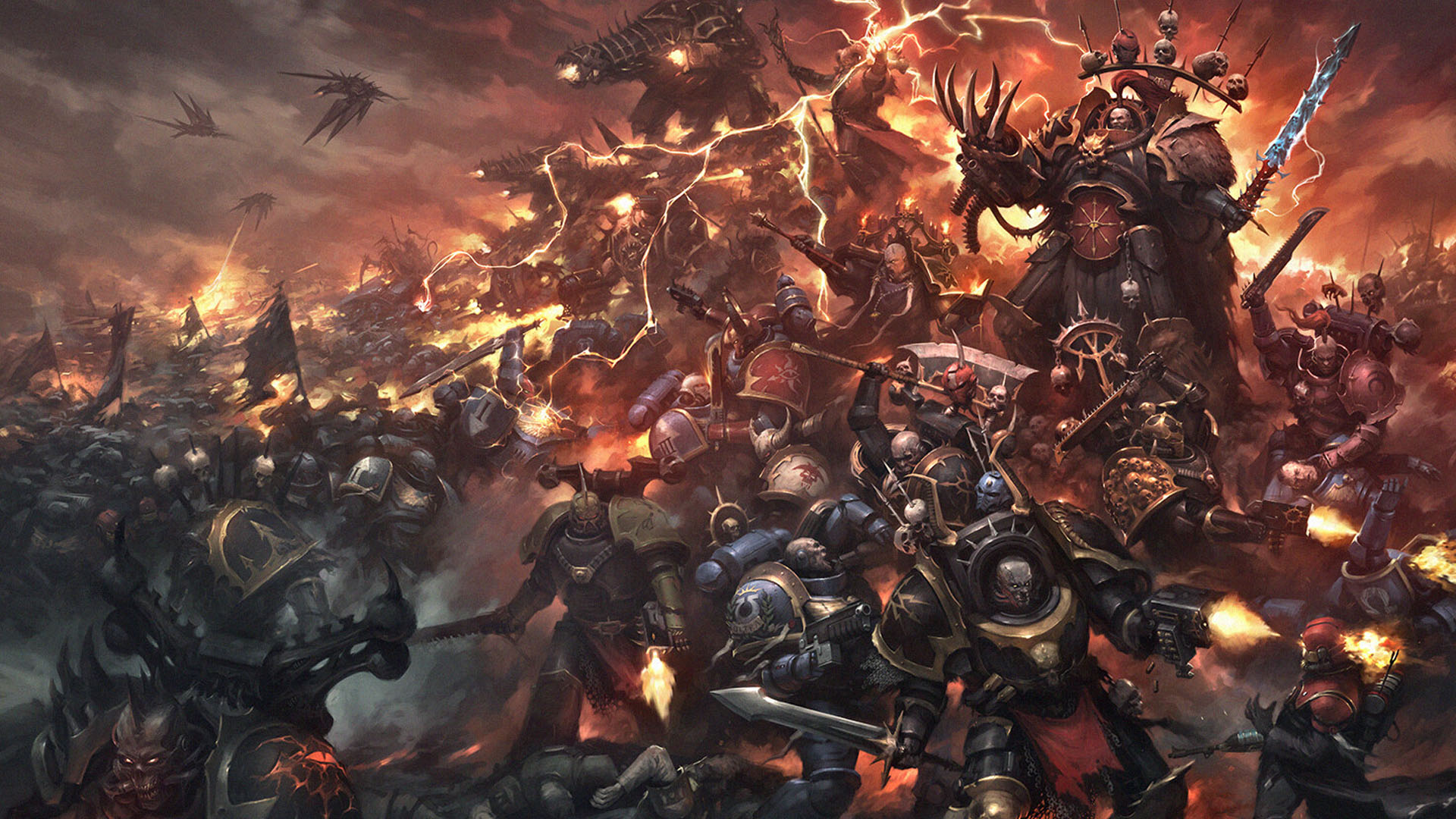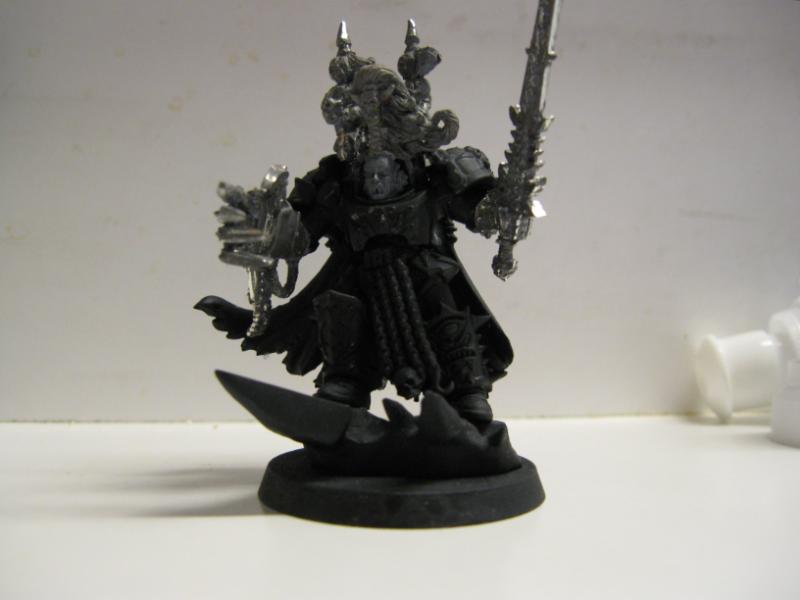Understanding the Differences

Chaos Black and Abaddon Black are both popular black paints in the Citadel paint range, renowned for their versatility and ease of use. However, despite their shared purpose, they possess distinct characteristics that make them suitable for different applications.
Pigment Composition and Finish
The pigment composition of each paint plays a crucial role in determining its final appearance and performance. Chaos Black is a matte black paint with a high pigment concentration, resulting in a deep, rich black color. Conversely, Abaddon Black is a satin black paint, characterized by a slightly glossy finish. This difference in finish is due to the presence of a resin that provides a smoother surface and enhances the glossiness of the paint.
Drying Time, Coverage, and Overall Performance
Chaos Black dries relatively quickly, typically within 30 minutes, allowing for efficient layering and blending. Abaddon Black, on the other hand, has a longer drying time, ranging from 45 minutes to an hour, which can be advantageous for achieving smooth, even coats. In terms of coverage, Chaos Black provides excellent coverage, requiring only one or two thin coats to achieve a solid black base. Abaddon Black, while also offering good coverage, might require slightly more coats to achieve the same level of opacity, particularly on lighter surfaces.
Application Techniques, Chaos black vs abaddon black
The unique characteristics of Chaos Black and Abaddon Black make them suitable for different painting techniques. Chaos Black, with its matte finish and quick drying time, is ideal for base coating, as it provides a solid, opaque foundation for subsequent layers. Its high pigment concentration also allows for effective layering and blending, enabling the creation of subtle tonal variations and depth. Conversely, Abaddon Black’s satin finish and longer drying time make it suitable for highlighting and edge highlighting, adding subtle sheen and definition to miniatures. Its smooth surface also facilitates dry brushing, creating a realistic textured effect.
Painting Techniques and Applications: Chaos Black Vs Abaddon Black
Both Chaos Black and Abaddon Black are popular choices for base coating and shading miniature models. They offer distinct characteristics that make them suitable for different painting techniques and applications. This section will delve into the specific techniques for using each paint effectively and explore how they can be combined to achieve depth and dimension in miniature models.
Base Coating with Chaos Black
Chaos Black is a versatile paint that can be used for base coating various miniature models. Its thin consistency allows it to flow smoothly over the surface, providing a consistent and even coverage. For base coating, dilute Chaos Black with a suitable thinner, such as Lahmian Medium or water, to achieve a desired viscosity. This will allow the paint to flow easily and prevent it from being too thick, which can lead to brush strokes or uneven coverage.
- Apply a thin coat of diluted Chaos Black to the entire model, ensuring to cover all areas.
- Allow the paint to dry completely before applying subsequent layers.
- If necessary, apply additional coats to achieve a solid and opaque base.
Shading with Chaos Black
Chaos Black can also be used for shading miniature models. Its dark color allows for creating deep shadows and highlighting details. For shading, use a thin layer of Chaos Black to create subtle shadows in recesses and crevices. This technique can be used to enhance the model’s detail and create a sense of depth.
- Apply a thin layer of Chaos Black to the recesses and crevices of the model, using a brush with a fine tip.
- Blend the edges of the shadows to create a smooth transition between the base coat and the shaded areas.
- Allow the paint to dry completely before applying further layers or highlights.
Base Coating with Abaddon Black
Abaddon Black is a highly pigmented black paint known for its deep, opaque coverage. This makes it an excellent choice for base coating miniature models. Its consistency is slightly thicker than Chaos Black, but it can still be thinned with a suitable thinner to achieve a smooth and consistent application.
- Thin Abaddon Black with a suitable thinner, such as Lahmian Medium or water, to achieve a desired viscosity.
- Apply a thin coat of diluted Abaddon Black to the entire model, ensuring to cover all areas.
- Allow the paint to dry completely before applying subsequent layers.
- If necessary, apply additional coats to achieve a solid and opaque base.
Achieving Smooth and Consistent Results with Abaddon Black
Abaddon Black’s high pigment concentration can sometimes lead to brush strokes or uneven coverage if not applied correctly. To achieve smooth and consistent results, follow these steps:
- Thin the paint adequately to achieve a smooth and even application.
- Use a brush with a fine tip and apply the paint in thin, even coats.
- Allow each coat to dry completely before applying subsequent layers.
- If necessary, use a thin layer of a black wash to cover any imperfections or brush strokes.
Combining Chaos Black and Abaddon Black for Depth and Dimension
Using Chaos Black and Abaddon Black together can create depth and dimension in miniature models. This technique involves using Chaos Black for base coating and Abaddon Black for shading. This combination allows for a subtle transition between the base coat and the shaded areas, enhancing the model’s detail and realism.
- Base coat the model with Chaos Black, using a thin and even layer.
- Once the base coat is dry, use Abaddon Black to shade the recesses and crevices of the model.
- Blend the edges of the shadows to create a smooth transition between the base coat and the shaded areas.
Pros and Cons of Chaos Black and Abaddon Black
| Paint | Pros | Cons |
|---|---|---|
| Chaos Black | Versatile for base coating and shading, thin consistency, flows smoothly, good for highlighting details. | Can be prone to brush strokes if not thinned properly, less opaque coverage compared to Abaddon Black. |
| Abaddon Black | Highly pigmented, opaque coverage, excellent for base coating, smooth and consistent application. | Thicker consistency, requires careful thinning, can be prone to brush strokes if not applied correctly. |
Historical Context and Evolution

The evolution of black paints in miniature painting mirrors the advancement of paint technology itself, from early, often crude formulations to the highly specialized and refined paints available today. Black, a fundamental color in miniature painting, has always played a critical role in establishing visual depth, contrast, and shadow effects, contributing significantly to the realism and artistry of miniature models.
Early Formulations and their Limitations
Early miniature painters relied on black pigments derived from natural sources, such as charcoal, soot, and lampblack. These early formulations often lacked consistency and presented challenges in achieving smooth, even applications. Charcoal, for instance, could be dusty and prone to smudging, while soot often lacked the desired intensity.
- Charcoal: This readily available pigment offered a dark gray tone, but its powdery nature made it difficult to control.
- Soot: A byproduct of burning materials, soot provided a blacker shade but could be uneven and prone to streaking.
- Lampblack: Produced by burning oil or resin, lampblack offered a more consistent black but could still be prone to clumping and uneven application.
These early black paints often required significant skill and patience to achieve desired results. The limited availability of quality black pigments and the challenges of consistent application made achieving deep, rich blacks a significant hurdle for early miniature painters.
The Rise of Synthetic Black Pigments
The development of synthetic pigments in the late 19th and early 20th centuries revolutionized the world of miniature painting. These synthetic blacks, such as carbon black and ivory black, offered superior qualities in terms of consistency, pigment density, and color depth.
- Carbon Black: A highly concentrated black pigment produced from the incomplete combustion of hydrocarbons, carbon black provided a deep, intense black with excellent coverage and lightfastness.
- Ivory Black: Derived from the charring of animal bones, ivory black offered a rich, warm black with a subtle, slightly reddish undertone.
The advent of synthetic black pigments significantly improved the quality and consistency of black paints, enabling miniature painters to achieve deeper blacks and more nuanced shadow effects.
Modern Black Paints: Chaos Black and Abaddon Black
Modern black paints, such as Chaos Black and Abaddon Black, represent the culmination of years of research and development in paint technology. These paints are formulated with high-quality pigments, specifically designed for miniature painting, offering excellent flow, coverage, and drying properties.
- Chaos Black: A popular choice among miniature painters, Chaos Black offers a smooth, even application with excellent coverage and a matte finish. It is known for its ability to create deep, rich blacks with minimal effort.
- Abaddon Black: Abaddon Black is renowned for its exceptional black depth and ability to create smooth, flawless coats. It is a versatile black paint that can be used for both base coats and fine details.
These modern black paints have revolutionized the way miniature painters approach black painting. They provide a level of consistency, coverage, and ease of application that was previously unimaginable, allowing painters to focus on their creative vision and achieve stunning results.
Anecdotes from Experienced Miniature Painters
“I remember using lampblack back in the day. It was a real struggle to get a smooth, even coat. You had to be incredibly careful not to leave any streaks or clumps.” – Veteran miniature painter, John Smith.
“The introduction of synthetic blacks like carbon black was a game-changer. It was so much easier to achieve deep, rich blacks without all the fuss and mess of traditional pigments.” – Experienced miniature painter, Mary Jones.
“Modern black paints like Chaos Black and Abaddon Black are amazing. They flow so smoothly and cover so well. It’s like magic!” – Enthusiastic miniature painter, Sarah Brown.
These anecdotes highlight the dramatic shift in the quality and ease of use of black paints for miniature painting, reflecting the significant advancements in paint technology over time.
Chaos black vs abaddon black – Choosing between Chaos Black and Abaddon Black can be a tough decision, especially when you want a bold, dark look. But remember, a stylish aesthetic isn’t just about color – it’s about the entire vibe. Imagine relaxing in a sleek living accents 1 black steel relaxer chair , its dark metal frame echoing the intensity of your chosen paint color.
Ultimately, the perfect choice for you will depend on the mood you want to create, and how that color complements your overall design vision.
The debate over Chaos Black vs. Abaddon Black often boils down to personal preference, but let’s face it, sometimes you just need to kick back and relax. A good way to do that is with a comfortable rocking chair, like the Walmart Dorel rocking chair.
Once you’ve found your zen, you can return to the important questions, like whether Chaos Black’s bold intensity or Abaddon Black’s deep mystery truly reigns supreme.

